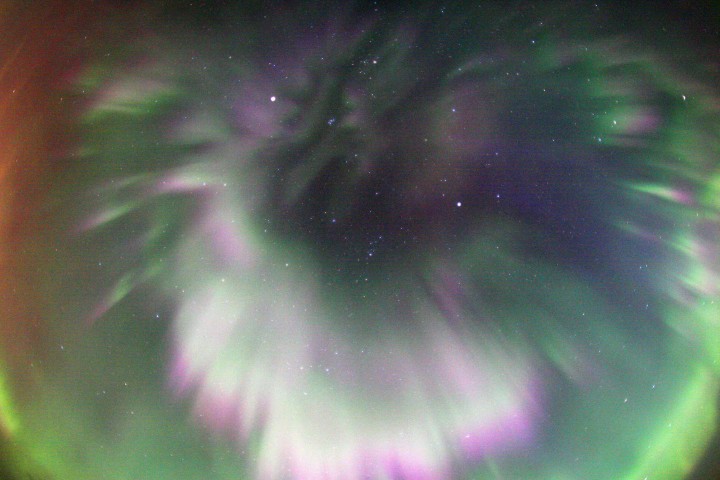
|
Credit & Copyright: Philippe Moussette
Explanation:
So far, the Aurora Borealis or
Northern
Lights have made some
remarkable visits to
September's skies.
The reason, of course, is the
not-so-quiet Sun.
In particular, a large solar active region now crossing
the Sun's disk has produced
multiple, intense flares and a large coronal mass ejection
(CME) that
triggered wide spread auroral activity just last weekend.
This
colorful example
of spectacular curtains of aurora
was captured with a fish-eye lens in skies over Quebec, Canada
on September 11.
Also featured is the
planet Mars, the brightest
object above and left center.
Seen near Mars (just below and to the right) is the tightly knit
Pleiades star cluster.
Although they can appear to be quite close,
the northern lights actually originate at extreme altitudes,
100 kilometers or so above the Earth's surface.
|
January February March April May June July August September October November December |
| ||||||||||||||||||||||||||||||||||||||||||||||||
NASA Web Site Statements, Warnings, and Disclaimers
NASA Official: Jay Norris. Specific rights apply.
A service of: LHEA at NASA / GSFC
& Michigan Tech. U.
Based on Astronomy Picture
Of the Day
Publications with keywords: aurora - Mars - pleiades
Publications with words: aurora - Mars - pleiades
See also:
